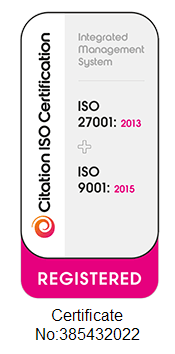Dealing with overwhelming debt is undoubtedly stressful. Its impact on your well-being, relationships, and career can be significant. It’s crucial to be well-informed and consider the advantages and disadvantages of available options. Bankruptcy, often seen as a last resort, may not always be as dire as it seems. Read on to understand the pros and cons of bankruptcy.
Is Bankruptcy the Right Choice for Me?
Individuals with debts exceeding £5,000 are eligible to petition for their own bankruptcy. While it may appear as a swift escape from debt, especially if you don’t have assets at risk, seek debt advice before finalizing your decision. Once the bankruptcy order is granted, it’s difficult to reverse. Before pursuing formal debt solutions, consider reaching out to your creditors and negotiating a payment holiday, reduced payments, or interest breaks.
Lenders may be more accommodating than anticipated since bankruptcy or insolvency alternatives may result in lesser debt recovery for them. If leniency isn’t an option, other solutions like a Debt Relief Order (DRO) or Individual Voluntary Arrangement (IVA) may be worth exploring. Connect with Debt Movement to consult our knowledgeable guides and determine the right path for your debt situation.
Understanding the Bankruptcy Process
After consulting our experienced guides and determining bankruptcy as the appropriate solution, the process begins. In England and Wales, complete the bankruptcy form on the government website and submit the required fee of £680 (£130 application fee and £550 bankruptcy deposit). Payment can be made in instalments, but full payment is necessary before proceeding. The process and fees differ in Northern Ireland and Scotland, with Scotland referring to bankruptcy as Sequestration.
You will receive a detailed letter from the Official Receiver (Accountant in Bankruptcy in Scotland) outlining your obligations. Your accounts will be frozen, and you’ll undergo an interview with your trustee, making sure that you cooperate with their information requests. The trustee will determine whether monthly payments are necessary and which assets (if any) should be sold.
Upon full cooperation with the trustee for 12 months, an automatic discharge is granted, and the remaining debts are written off. If payments are required, they typically last for three years. Bankruptcy will be noted on your credit file for six years.
Pros and Cons of Bankruptcy in the UK
Pros:
- Bankruptcy covers all unsecured debts.
- Interest is frozen (unless debts are paid in full, statutory interest may apply).
- After 12 months, all debt is written off, and creditors take no further action.
- Many consider bankruptcy the quickest and most cost-effective debt solution.
- In England and Wales, online applications and installment payment options are available.
Cons:
- Bankruptcy could impact your employment (review your employment contract or if you are a Director of a Limited company).
- Property and valuable assets may be sold if owned.
- Bankruptcy application fees: £680 in England and Wales, £647 in Northern Ireland, and £200 in Scotland.
- Bankruptcy appears on the public Individual Insolvency Register/Register of Insolvencies and credit file for six years.
- Additional restrictions may apply
Don’t Suffer in Silence – Seek Assistance
If burdened by problem debt, remember that you don’t have to face it alone. Speak with our empathetic and professional guides about your concerns. They’ll help you embark on the journey to financial freedom in 2023 and beyond.
At Debt Movement we provide professional debt guidance and solutions that help you move out of debt. We offer non-judgemental financial guidance to relieve the burden of financial strain and offer support on your journey to financial freedom. Request a free call back today.













